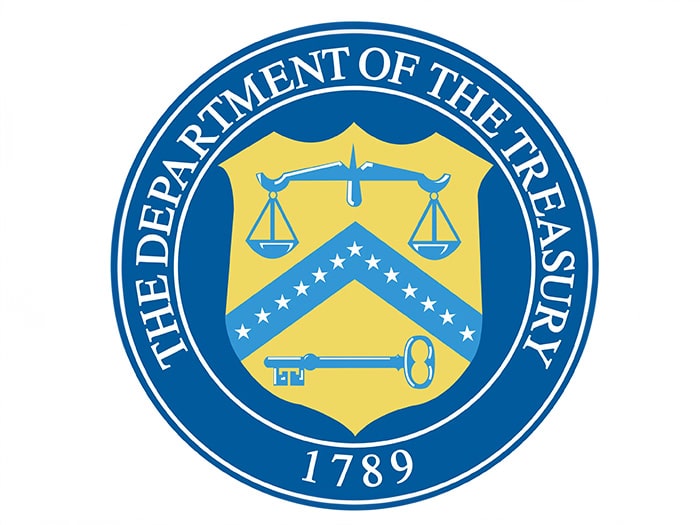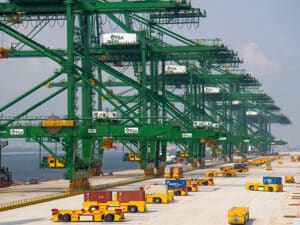
Op-Ed: A look at Oil Price Cap and new sanctions
Written by Heather Ervin
A key pillar of U.S. and G7 countries’ sanctions policy implemented in response to Russia’s military invasion of Ukraine is the Oil Price Cap.
By Manuel Levitt, senior associate, of Miller & Chevalier
The global maritime shipping sector continues to feel the geopolitical shock waves from the unrest and violent conflicts in Ukraine and the Middle East as the U.S. government and its G7 allies increasingly putting maritime shipping companies at the vanguard of sanctions enforcement.
A key pillar of U.S. and G7 countries’ sanctions policy implemented in response to Russia’s military invasion of Ukraine is the so-called “Oil Price Cap,” which, while not prohibiting the trade in Russian-origin oil and petroleum products outright, creates major compliance hurdles and risks for companies involved shipping Russian-origin oil and petroleum products as well as companies involved in providing insurance (including reinsurance and protection and indemnity), commodities trading and brokering services, financing, vessel flagging, and customs brokering.
As these new price-based restrictions have been imposed in part to deprive the Russian government and its military of funds, some Russian companies and illicit actors have turned to methods to evade these restrictions and avoid detection by foreign sanctions authorities.
OFAC and others have tried to help companies navigate these new risks by issuing guidance highlighting these tactics, which include:
- Falsifying documentation, particularly Oil Price Cap (“OPC”) attestations, to disguise the true price of Russian oil products or obscure information about a vessel
- Using opaque shipping and other costs to obfuscate the actual price of Russian oil products (e.g., bundling shipping, freight, customs, and insurance costs)
- Using third-country supply chain intermediaries and complex corporate structures to evade detection as an owner or trader of Russian oil products that are not in compliance with the OPC
- Engaging in deceptive flagging activities, including using de-registered flags and changing flags on multiple occasions (i.e., “flag hopping”)
- Relying on a “shadow” or “dark” fleet to trade products sold above the OPC, often involving using older vessels that are anonymously owned or have opaque ownership structures
- Making untraceable and irregular voyages or engaging in automatic identification system (“AIS”) manipulation, spoofing, and ship-to-ship transfers without any rational or legitimate explanation
As a result of this new landscape, concepts like “shadow fleet,” “illicit ship-to-ship transfers,” and various types of “AIS spoofing,” initially only familiar to a few marine and national security enthusiasts, are now discussed widely in sanctions designations announcements and guidance published by the United States Department of the Treasury’s Office of Foreign Assets Control (“OFAC”), the United Kingdom’s Office of Financial Sanctions Implementation (“OFSI”), and client alerts from U.S. sanctions lawyers.
Notably, Russian companies seeking to evade the Oil Price Cap restrictions did not invent these tactics. Those following the U.S. government’s activities with respect to alleged Iranian oil smuggling are likely keenly aware of the tactics used by sanctions evaders in the Persian Gulf, and the increasingly aggressive and sophisticated methods the U.S. government is using to detect and crack down on sanctions evaders.
Since January 1, 2024, five of the nine OFAC announcements of sanctions designations on Iran stem from the use of marine shipping practices designed to evade sanctions. During this same time period, 14 Russian vessels and Russian state-owned shipping company and fleet operator Sovcomflot were sanctioned for operating in the marine sector of the Russian economy, a sector targeted by U.S. sanctions. With respect to criminal sanctions enforcement, the Department of Justice’s increased use of cargo seizures alongside indictments (most recently involving $108 million and 500,000 barrels of fuel) in response to Iran sanctions violations demonstrates the U.S. government’s increasing willingness to use aggressive cross-border prosecutorial strategies in high-priority sanctions programs to stop sanctions evaders and their enablers.
As sanctions evasion strategies become more sophisticated and sanctions enforcement agencies embark to better understand and counter these methods, the expectations on innocent marine shipping companies from OFAC and others sanctions enforcement agencies, including OFSI inevitably increase. Vessel charterers, insurers, brokers, and others in this sector who fail to meet the changing geopolitical and sanctions compliance landscape with better systems to, for example, track vessels and goods, conduct due diligence on third parties, and detect practices like AIS spoofing, will inevitably be vulnerable to, at minimum, business disruptions, or worse, penalties from sanctions violations. OFAC has been clear about this for years: companies are expected to have a risk-based approach to sanctions compliance.
At a time when much attention is being put on the physical risks for marine shipping companies operating in regions like the Red Sea, it is just as critical that they also heed the clear messages being sent from sanctions authorities and equip themselves to meet this geopolitical moment.




